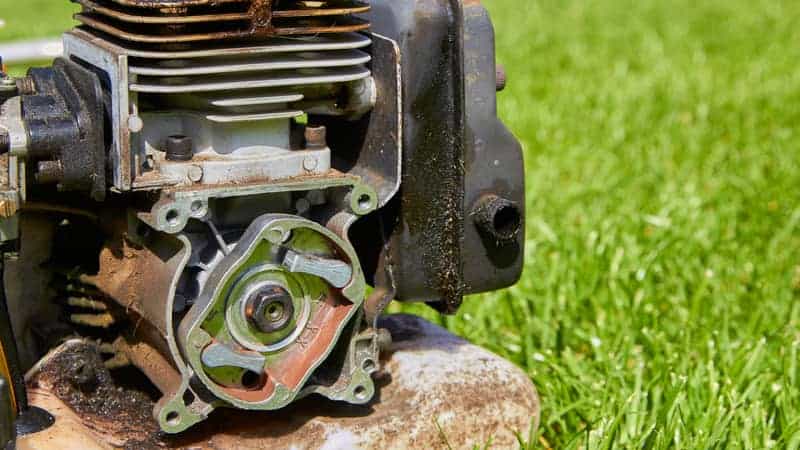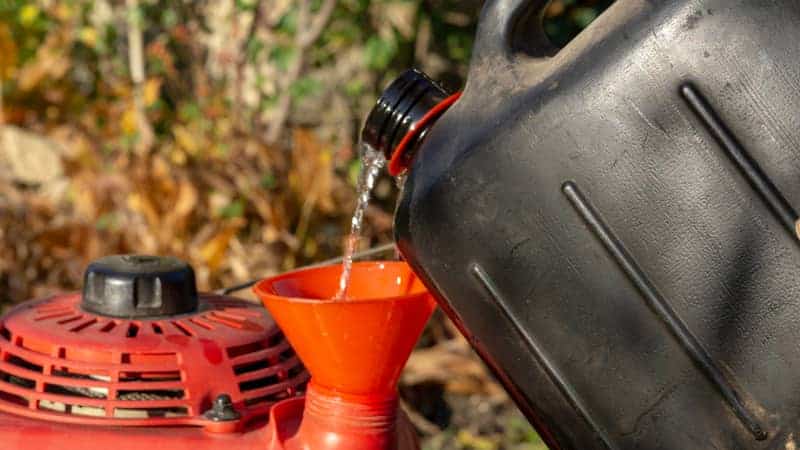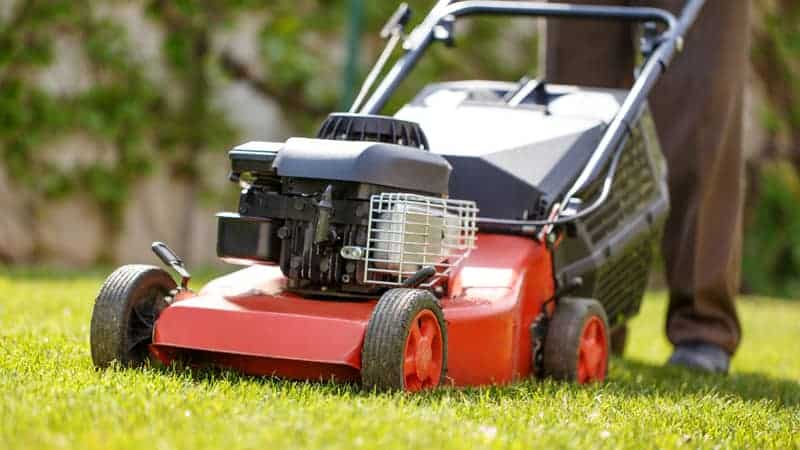A lot of us enjoy the task of mowing our lawns. It can feel soothing, walking back and forth across the grass, and of course, there’┐Įs the satisfaction of a well-mowed lawn at the end. So what happens when...
A lot of us enjoy the task of mowing our lawns. It can feel soothing, walking back and forth across the grass, and of course, there’┐Įs the satisfaction of a well-mowed lawn at the end.
So what happens when you start your beloved mower’┐Į only for it to sputter, then turn off?
There are several reasons why your lawn mower starts then dies, including:
Dirty carburetor Old fuel Dirty or worn spark plug Too much gas or oil Blocked fuel cap Clogged lawn mower blades Dirty air filter Moisture or blockage in fuel lineProper lawn mower maintenance is a must to keep your mower functional and efficient. But issues can arise despite our best efforts ’┐Į so if your mower is stalling, get ready to get your hands dirty!
’┐Į
Common Reasons a Lawn Mower Starts Then Stops
Even the best lawn mowers can develop issues over time, whether from general use or overlooked maintenance.
If you get a professional mowing service to maintain your lawn, it’┐Įs still good to know in case something happens!
Here are some common reasons your lawn mower starts then dies.
’┐Į
1. Dirty carburetor

A dirty carburetor is one of the most common reasons your lawn mower won’┐Įt stay running.
The carburetor is the engine mechanism that brings in air and mixes it with fuel to create combustion. It’┐Įs part of your lawn mower’┐Įs ignition system.
If the carburetor is dirty, it won’┐Įt mix the air properly, meaning your mower’┐Įs engine doesn’┐Įt have power. Several things can cause the clogging, including evaporated gas or general residue build-up from use.
’┐Į
How to fix it:
You’┐Įll need to clean the mechanism! You can ’┐Įblow out’┐Į the mechanism using a carburetor cleaner to remove contaminants. Try to look for one with a directional straw or precise nozzle.
Unscrew the carburetor, then use the cleaner on the mechanism plus the screw and hole. Don’┐Įt over-tighten the screw when reattaching the carburetor bowl.
If your lawn mower has been idle for a prolonged period (say, over winter), it’┐Įs a good idea to use some carburetor cleaner before starting it up.
Check below for a more detailed guide on cleaning your carburetor.
’┐Į
2. Old fuel
Even if your fuel tank is full, if the gas is expired or stale, it won’┐Įt work! The stale gas might not ignite properly, causing your lawn mower to sputter.
This is a common reason why a push mower starts then dies.
Alternatively, the old gas may have evaporated and left a gummy residue. The clogging then restricts fuel flow, causing the engine to start then die.
Bad gas can also lead to incomplete combustion.
’┐Į
How to fix it:

Drain the gas tank and replace it with fresh gas!’┐Į
You can also add fuel stabiliser to prevent engine clogging ’┐Į just be mindful of the ratio of stabiliser to fuel.
’┐Į
3. Dirty or faulty spark plug
The spark plug ignites the fuel and kickstarts the combustion. However, like many parts of a lawn mower, general use can lead to dirt or wear and tear.
A dirty or broken spark plug, or a worn spark plug wire, can cause intermittent sparking. That could be why your lawn mower cuts out after starting.
’┐Į
How to fix it:
Check if your spark plug needs cleaning or replacement. The general rule is to get a new spark plug every 1’┐Į2 years.
If you notice carbon build-up on the tips of the spark plug, clean it! Use a cloth dipped in rubbing alcohol to cut any oil and carbon.’┐Į
You can scrub the tips with an old toothbrush for a deeper clean.
’┐Į
4. Too much gas or oil
One sign of too much engine oil or fuel is white smoke coming from your mower. The smoke comes from the excess gas or oil burning from the heat of the engine.
Eventually, the excess oil or gas will ’┐Įdrown’┐Į the engine, causing it to stop.
’┐Į
How to fix it:
For ride-on mowers, you’┐Įll need a syphon to drain some of the oil or gas. Push or walk-behind mowers can be tipped to the side to allow the oil or gas to drain out.
Make sure to wipe off any residue before restarting your lawnmower.
It may feel tempting to put extra gas or oil into the tank, but it’┐Įs essential to stick to the fill line! This ensures your lawn mower has just enough fuel or oil to run.
’┐Į
5. Blocked fuel cap

The fuel cap has a tiny vent that allows air into the gas tank. That air prevents a vacuum from forming in the tank, which would cause fuel to stop flowing.
No gas flow means no fuel in the combustion chamber ’┐Į which means your lawn mower will start then stall.
’┐Į
How to fix it:
Remove the fuel cap and check for any blockages in the breather. You can clean the cap using a nozzle cleaner or an old toothbrush.
Alternatively, you can replace the cap entirely.
’┐Į
6. Clogged lawn mower blades
Sometimes, the problem is external! If your lawn mower’┐Įs engine is stalling, it may be due to debris build-up in the blades.
Clippings and other debris clogging the blade mean the engine needs to exert more effort to turn it. At some point, this will cause your lawn mower to stall, then die.
’┐Į
How to fix it:

Switch off your lawn mower (and, if it’┐Įs electric, disconnect the power). For ride-on models, you can raise the mower deck; for push mowers, tip them on their side.
Check the blades and undercarriage for debris. Be careful when removing any clippings, twigs, and other build-up ’┐Į you don’┐Įt want to hurt yourself or damage your mower.
A clogged underside is usually a sign of dull mower blades that aren’┐Įt cutting efficiently.’┐Į
Inspect your mower to see if you need to sharpen the mower blades or change the mower blades entirely.
’┐Į
7. Dirty air filter
The air filter prevents your mower from pulling dirt and debris into the internal mechanisms. It also allows proper airflow for gas combustion.
A clogged or dirty air filter restricts that airflow, leading to incomplete combustion.
You should replace the air filter around once a year.
’┐Į
How to fix it:
Clean the air filter! Depending on your model, you’┐Įll have either a foam or paper filter.
Foam filters can usually be washed with soap and water ’┐Į check your manual first, though. You can also clean foam filters with compressed air. Don’┐Įt forget the air filter cover as well!
On the other hand, paper filters can simply be replaced with a new one.
’┐Į
8. Moisture or blockage in fuel line

Sometimes, humid or rainy weather can cause moisture to enter the fuel lines. Other times, moisture gets into the gas itself and prevents proper combustion.
Gas residue can also build up and cause a blockage along the line.
’┐Į
How to fix it:
Check your fuel line for any nicks, breaks, or other defects. If there are any, replace it.
For blockages, you can try to ’┐Įpush’┐Į the residue out manually. But if that doesn’┐Įt work, it’┐Įs easier to replace the line in this case as well.
You can also check if your fuel has moisture. There are additives that can remove water, or you can simply drain the contaminated fuel and refill with new gas.
’┐Į
How to Clean the Carburetor
If you suspect a dirty or clogged carburetor is why your lawn mower starts then dies, it’┐Įs easy enough to fix. Before getting a new one, try and see if you can clean the carburetor first.
Always start by shutting your mower off, then letting it completely cool down.
Check the connections and screws ’┐Į the gas residue and constant vibrations can wear these parts down. Dirty connections can be cleaned with rubbing alcohol, but worn-out connections or screws will require an all-new lawnmower carburetor.
Move onto the carburetor itself. Carefully detach the connections and unmount the mechanism from its bolts. Disassemble it to expose the internal components.
Use your preferred carb cleaner on all areas, even inside the ports. Check the fuel bowl as well, since stale gas can evaporate and leave a sticky residue on the bowl’┐Įs surface.
Sandpaper or white vinegar can deal with any rust build-up.
Wipe away any residue with a microfibre cloth, then reassemble the mechanism. Reattach the carburetor, then start your lawn mower.
If your lawn mower starts then dies again, there may be a different issue. Otherwise, it’┐Įs time to get a new carburetor.
The post Lawn Mower Starts Then Dies? Here’┐Įs How To Fix It appeared first on Lawn.com.au.








